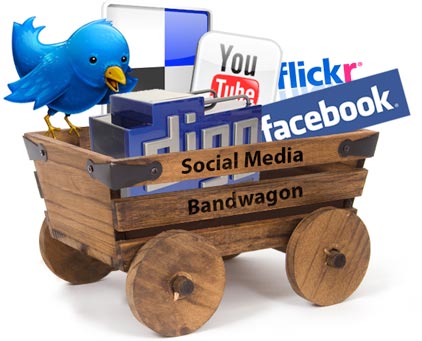It is obvious to most marketers by now that there are mixed feelings toward social advertisements with consumers, but it is also clear that social media is constantly changing the way that marketers and brands reach their customers and potential future customers. However, it seems that the amount of social marketing that is taking place today is getting to be a bit too much, in that there seems to be an uneven ratio between marketing efforts and consumers that actually use social networks. A recent article from eMarketer gives a lot of insight into the excess of marketing on social platforms, as well as the way these social users feel about the marketing that is aimed toward them.
According to a poll study conducted by Pitney Bowes Software, an industry solutions company, as reported by eMarketer, in the case of a few of marketers’ most used social platforms, there are far more marketers on the networks than the amount of users calls for. A chart shows that, for Facebook and Youtube, the numbers are actually just where they should be, with more consumers than marketers which creates a great balance for marketers. However, in the case of Twitter, 57% of marketers confirmed that they are currently on the network and have put for marketing efforts on it, while only 31% of internet users said that they had accounts with the network. On Google+, the difference was even greater, with only 22% of consumers using the site, and 51% of marketers surveyed having social campaigns on the network. The largest difference is with LinkedIn, in that there is a 31% difference between the amount of LinkedIn users and the amount of LinkedIn marketers.
The marketers that are on these networks, however, have told Pitney Bowes Software quite a bit about the levels of annoyance that these marketing efforts bring.
From the eMarketer article:
The annoyance rate of consumers who saw ads from brands they followed was 11%, but jumped to 24% for those confronted with social media marketing messages from brands they didn’t follow, showing that tolerance for unsolicited messages was noticeably lower.
One of the main reasons that social users like or become fans of certain brand pages is so that they can receive the posts from these brands, where they can learn about promotions and deals that they otherwise would not have. However, they only enjoy the ads that they were expecting to receive, and now that there are so many new ways for marketers to reach users that are not fans, people are becoming more and more annoyed.
If this article tells us anything it is that a lot of caution needs to be taken in social marketing. Internet users visit social sites in order to socialize with friends and family, and not so much learn about brands and businesses. Finding a way to market to users without interrupting their social activity too much is the only way to receive a successful response from consumers on social networks.




